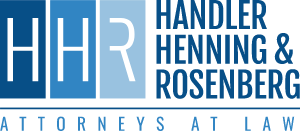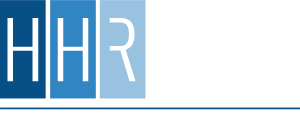According to the National Highway Traffic Safety Administration (NHTSA), rear-end accidents are the most common type of collision on our nation’s roadways. Each year, nearly one-third of motor vehicle crashes are classified as rear-end accidents, where a vehicle collides with the rear of another vehicle positioned in front of it. These accidents often occur at traffic lights and stop signs, where the front vehicle is already stopped. They can also happen in heavy or changing traffic if a driver does not slow down or stop their vehicle in time. Distracted driving is often to blame for rear-end accidents.
The Presumption of Fault in a Rear-End Accident
It's no secret that the driver in the rear is often presumed to be at fault in rear-end collisions. After all, the logic goes, shouldn’t a driver be able to stop safely if they're following at a proper distance?
But, as with many things in the law, it's not always that straightforward.
The driver in the front may be to blame for a rear-end crash in situations such as:
- Reversing Suddenly: If the lead driver suddenly puts their car in reverse (perhaps they missed a turn or were attempting a sudden parking maneuver) and collides with a car behind them, they could be found at fault.
- Faulty Brake Lights: Brake lights are crucial for signaling slowing or stopping. If the front driver's brake lights are out, the rear driver might not get timely notice that the car in front is slowing or stopping.
- Stopping Abruptly for No Reason: We've all experienced erratic drivers on the road. If a driver stops without reason—particularly on a fast-moving road—they may be found partially or fully at fault if a collision occurs.
- Hazardous Lane Changes: If a driver cuts off another vehicle by changing lanes abruptly without signaling, and a rear-end collision ensues, the fault could lean toward the front driver.
- Malfunction or Breakdown Without Warning: A driver whose car malfunctions or breaks down but fails to turn on hazard lights or pull over to a safe spot might be deemed responsible for a subsequent rear-end collision.
- Intentionally Causing a Collision: In some instances, a driver may intentionally cause a rear-end accident by swerving suddenly in front of another vehicle and slowing or stopping. This may be linked to insurance fraud or road rage.
Two Stories Showing Fault in Rear-End Collisions
Let’s take a quick look at two made-up examples of rear-end collisions and how fault may lie with either driver.
Story 1: The Unexpected Reverse
It was a Saturday afternoon, and Megan was heading to the local farmer's market in her Volkswagen Beetle. The sun was high, and the streets were filled with weekend travelers.
Stopped at a red light, Megan noticed that she had pulled a little too far into the crosswalk. She shifted her vehicle into reverse and moved back, giving pedestrians more room to cross in front. The light turned green, and Megan pressed on the gas pedal. The sudden jolt was followed by the ominous sound of crushed metal.
Behind her, Paul, who had been sipping on an iced coffee, spilled his drink all over his white shirt. His Prius had just been introduced to the back of Megan's Beetle.
Upon realizing her blunder, a mortified Megan stepped out, exclaiming, "I am so sorry, I didn’t realize I was still in reverse!"
Paul, trying to calm himself despite the coffee stain and the car's dented front, replied, "Let's just be thankful no one got hurt. But please, let's exchange insurance details."
In this story, Megan's accidental reversing at the light placed the blame squarely on her.
Story 2: The Distraction Behind
Eric worked as a delivery driver for a local electronics shop. Every day, he'd cruise around town in the company van, dropping off gadgets and gizmos. It gave him time to think and enjoy some music on the road.
One evening, as the sun was setting, Eric was at the tail end of his deliveries. He pulled out his phone at a red light to check for any last-minute route changes.
Up ahead, Sarah was in her sedan, waiting patiently for the light to change.
The light turned green. Sarah began to move, but suddenly, a pedestrian rushed across the street, causing her to slam her brakes.
Eric, still engrossed in his phone, didn't see the sudden stop. With a thud, the van plowed into Sarah's sedan.
Jumping out of the van, Eric was met with a shaking Sarah. "I had to stop because of the pedestrian," she explained, pointing to the now-distant figure hurrying away.
Eric sighed, looking at his phone and then the damaged rear of Sarah's car.
In this story, Eric's distraction led to him being at fault for the rear-end collision.
The Importance of Investigating Rear-End Collisions
While the above stories are fictional, they prove that the blame for a rear-end accident could lie with either driver. A thorough investigation following a rear-end accident is crucial for a variety of reasons.
First and foremost, it's essential to determine fault accurately. While it's a common assumption that the rear driver is always at fault, the truth can be more nuanced. Thoroughly investigating the scene can help clarify responsibility. Physical evidence, such as skid marks, vehicle damage, and prevailing road conditions, offers invaluable insights into the events leading up to the collision. This evidence needs to be documented promptly before it alters or vanishes.
Witness testimonies serve as another cornerstone of a meticulous investigation. These unbiased accounts can shed light on the incident from different perspectives, capturing details that those directly involved might miss or forget.
In the intricate world of insurance claims, detailed and accurate information is a must. Insurance companies rely heavily on this data to process claims, ensuring that victims or responsible parties are appropriately addressed in terms of compensation or liability. From a legal standpoint, comprehensive documentation safeguards individuals against potential false accusations or claims.
Talk to a Pennsylvania Rear-End Accident Lawyer
The aftermath of an accident can be overwhelming. Insurance companies might attempt to downplay your claim, or disputes over fault could arise. Our firm, with its deep-rooted history in Pennsylvania, is adept at navigating the intricate nuances of personal injury law. An experienced attorney can assess the specifics of your case, guide you through the legal process, and fervently advocate on your behalf.
In the complex world of rear-end collisions, assigning fault isn't always easy. Handler, Henning & Rosenberg LLC stands ready, as we have since 1922, to fight for those injured in such accidents. Remember, understanding your rights and seeking counsel from a skilled Pennsylvania car accident attorney can make all the difference.


